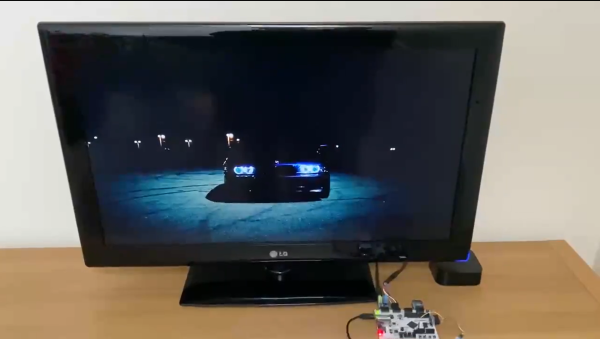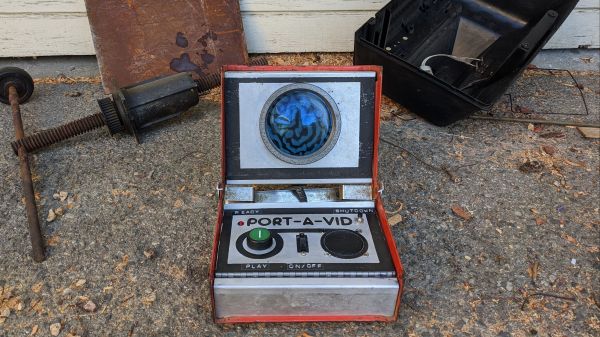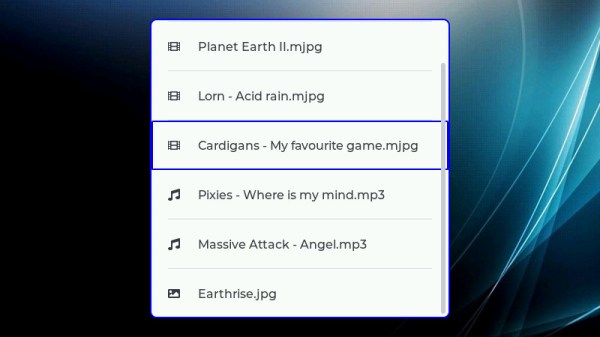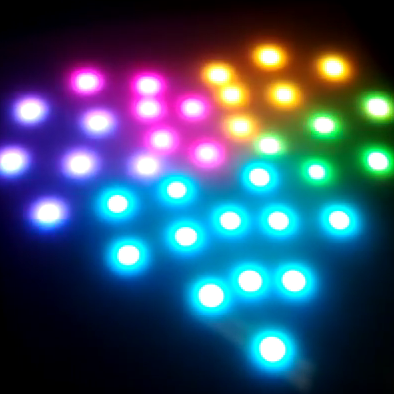There was a time when only the most expensive televisions could boast crystal clear pixels on a wall-mountable thin screen. What used to be novelty from “High Definition Flat Screen Televisions“ are now just “TV” available everywhere. So as a change of pace from our modern pixel perfection, [Emily Velasco] built the Port-A-Vid as a relic from another timeline.
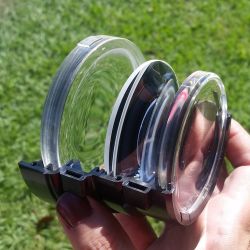 The centerpiece of any aesthetically focused video project is obviously the screen, and a CRT would be the first choice for a retro theme. Unfortunately, small CRTs have recently become scarce, and a real glass picture tube would not fit within the available space anyhow. Instead, we’re actually looking at a modern LCD sitting behind a big lens to give it an old school appearance.
The centerpiece of any aesthetically focused video project is obviously the screen, and a CRT would be the first choice for a retro theme. Unfortunately, small CRTs have recently become scarce, and a real glass picture tube would not fit within the available space anyhow. Instead, we’re actually looking at a modern LCD sitting behind a big lens to give it an old school appearance.
 The lens, harvested from a rear-projection TV, was chosen because it was a good size to replace the dial of a vacuum gauge. This project enclosure started life as a Snap-On Tools MT425 but had become just another piece of broken equipment at a salvage yard. The bottom section, formerly a storage bin for hoses and adapters, is now home to the battery and electronics. All original markings on the hinged storage lid were removed and converted to the Port-A-Vid control panel.
The lens, harvested from a rear-projection TV, was chosen because it was a good size to replace the dial of a vacuum gauge. This project enclosure started life as a Snap-On Tools MT425 but had become just another piece of broken equipment at a salvage yard. The bottom section, formerly a storage bin for hoses and adapters, is now home to the battery and electronics. All original markings on the hinged storage lid were removed and converted to the Port-A-Vid control panel.

Before: broken Snap-On MT425

After: An escape portal. Please stand by…
A single press of the big green button triggers a video to play, randomly chosen from a collection of content [Emily] curated to fit with the aesthetic. We may get a clip from an old educational film, or something shot with a composite video camera. If any computer graphics pop up, they will be primitive vector graphics. This is not the place to seek ultra high definition content.
As a final nod to common artifacts of electronics history, [Emily] wrote an user’s manual for the Port-A-Vid. Naturally it’s not a downloadable PDF, but a stack of paper stapled together. Each page written in the style of electronics manuals of yore, treated with the rough look of multiple generation photocopy rumpled with use.
If you have to ask “Why?” it is doubtful any explanation would suffice. This is a trait shared with many other eclectic projects from [Emily]. But if you are delighted by fantastical projects hailing from an imaginary past, [Emily] has also built an ASCII art cartridge for old parallel port printers.

Continue reading “Escape To An Alternate Reality Anywhere With Port-A-Vid” →



